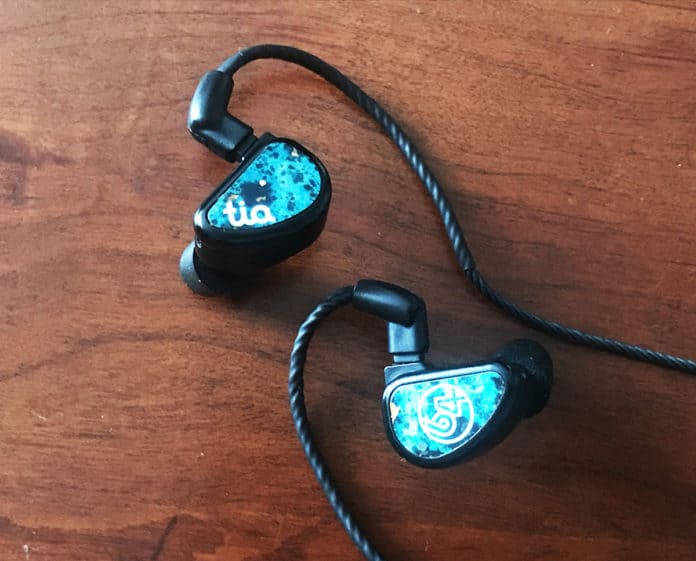The 64 Audio Tia Fourte is one of the most highly regarded IEMs out there! Well, this week I got to spend some quality time with its Limited Edition sibling, the 64 Audio Tia Fourte Noir. What are the differences between the two, and which one is right for you? Let’s take a closer look with this 64 Audio Tia Fourte Noir Review and Comparison
64 Audio Tia Fourte Noir Review and Comparison
In the Box
-64 Audio Tia Fourte Noir IEMs
-Detachable 2-pin connector with 2.5 mm balanced termination
-2.5 mm to 3.5 mm adapter
-Silicone eartips (s, m, l)
-Foam eartips (s, m, l)
-Protective, clasping carrying case
-Cleaning tool
-Shirt clip
-Sticker
-Documentation
Design
Look and Feel
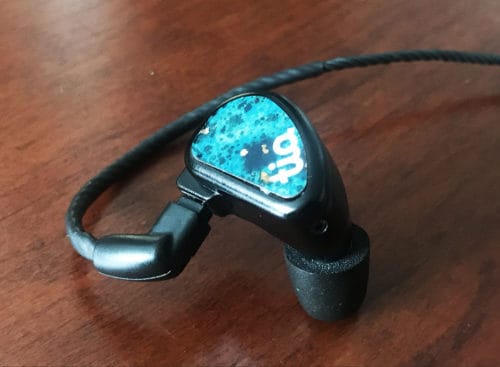
The 64 Audio Tia Fourte Noir looks just like the regular Tia Fourte, but with a matte black aluminum shell. As a result, it has a classier, more mature look than the Tia Fourte.
In the hands, the Noir feels strong and high quality while maintaining a light weight. Additionally, its cable connects feel strong and durable.
Comfort and Fit
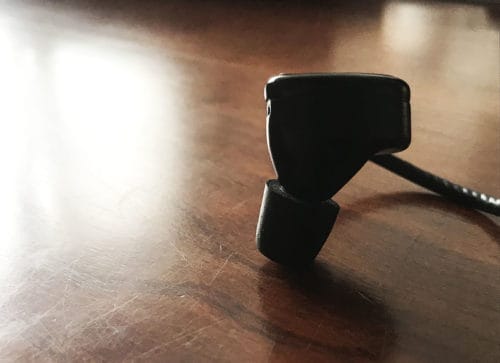
The 64 Audio Tia Fourte Noir has a tapered body leading to its nozzle. Its nozzle is slightly angled. As for its fit, I have relatively small ears, and had the easiest time fitting the IEMs in my ears with the foam eartips. It seemed like my ears were somewhere between the small and medium silicone tips, so neither fit just right. However, due to the light weight of the Noir, once I got a seal, they fit securely and comfortably in the ears. They didn’t touch the outside of my ears at all, nor did the cable touch too much. The cable of the Noir features molded earhooks, but they have kind of a loose hook shape. As a result, they didn’t hug the ear super tightly and just provided light support.
Cable
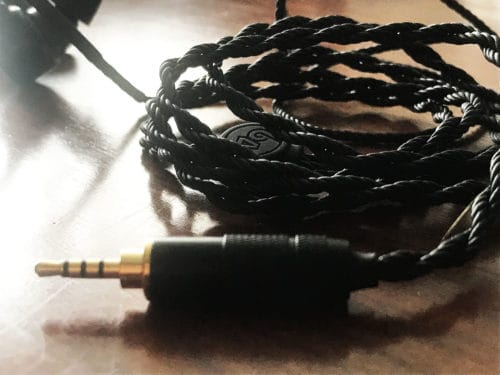
The cable of the 64 Audio Tia Fourte Noir is an upgraded cable from the regular Tia Fourte. It has 8 conductors which have individually insulated and then twisted together. The concept behind the cable is that it has a lower resistance than the previous model, providing a smoother high frequency response. Additionally this cable is balanced and terminates to a 2.5 mm connector. No frets if you’re player doesn’t have a balanced output, though! The IEMs also come with a 2.5 mm to 3.5 mm adapter.
Driver
So much of the inside architecture is similar between the 64 Audio Tia Fourte Noir and Tia Fourte. Both have three balanced armature drivers and one dynamic driver. Both feature 64 Audio’s APEX (air pressure exchange) technology. Lastly, as evident by the name, both implement 64 Audio’s TIA technology (which includes tia drivers, tia single bore, tia acoustic chambers, and a passive radiator system). However, the main difference in drivers between the Noir and the Fourte is that the Noir has a retuned dynamic driver, which should provide more warmth and richness to the low end according to 64 Audio.
Sound
Low Frequencies
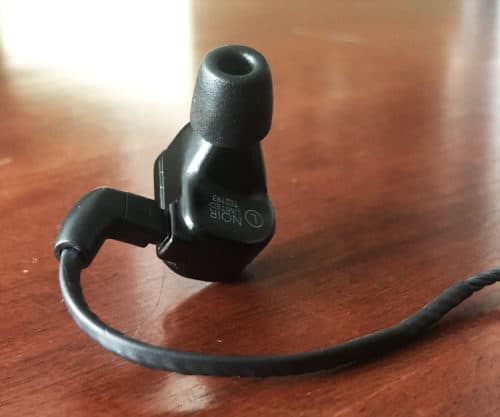
The low frequencies of the 64 Audio Tia Fourte Noir have a good sense of movement and energy. With a boost in the sub region around what sounded like 40 Hz, the low end moves air. This movement comes through in a tight way and as a result sounds spacious and energetic. As a result, it is both emotionally impactful and punchy and works well for a wide variety of genres.
For example, when I was listening to the song Cleva by Erykah Badu, the kick drum has a great combination of extension and tight punchiness. There is a lot of space around it, providing separation between the kick and bass guitar. Additionally, the low end has a full sustain and subtlety to its movement which makes it extra groovy in this song.
Middle Frequencies
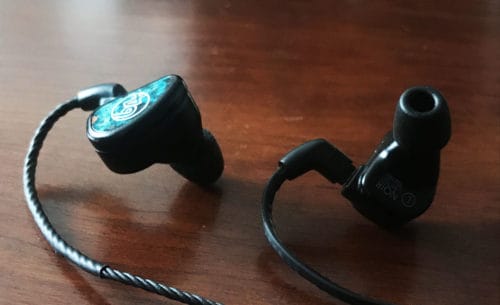
The middle frequencies of the 64 Audio Tia Fourte Noir, like the Tia Fourte has specificity, dynamic expression, harmonic complexity, and great separation. However, the shape of the midrange feels a little different between the two. The Noir had a boost in the low-mids around what sounded like 200 Hz. As a result, bass guitars, low synths, pianos, and cellos have added thickness and energy. However, this is not to imply cloudiness at all. On the contrary, the low-mids still have an extremely impressive level of separation and spaciousness around them.
Additionally, the Noir has a cut at the base of the high-mids between what sounded like 1 kHz- 2 kHz. This cut provides even more distinct separation between the middle-mids and the high-mids as well as a feeling of warmth to instruments with a lot of high-mid energy. However, it also makes drums, strings, horns, acoustic guitars, and piano hammers lean toward their attacks. Lastly, a boost in the top area of the high-mids between what sounded like 4 kHz- 5 kHz provided articulation and presence to mixes as a whole. This presence sounded slightly less close in space than with the Tia Fourte due to the thicker sounding midrange of the Noir.
For example, when I was listening to the song Shout Mountain Music by Old Crow Medicine Show, the acoustic guitars, fiddles, banjos, hand claps all had an impressive sense of separation from one another. Additionally, the upright bass felt full and gave a sense of foundational support to the mix as a whole. This support gave the rest of the high-mid rich instruments the autonomy to move and dance with dynamic excitement and clarity.
High Frequencies
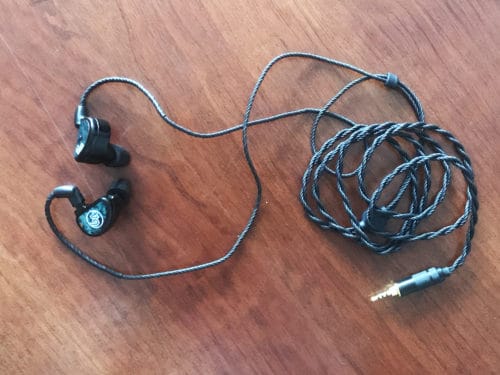
The high frequencies of the 64 Audio Tia Fourte Noir have detail and harmonic complexity. Compared to the Tia Fourte, the highs sound slightly quieter in the mix. However, with both IEMs, they sound dynamic and spacious and gorgeous. The Noir has a little boost in the lower treble around what sounded like 6 kHz leftover from the boost in the high-mids. However, immediately following that boost, it has a dip around what sounded like 7 kHz- 8 kHz. As a result, it has a little bit less of a sense of attack than the Fourte, but does feel warmer in the highs. This boost and cut is largely even sounding, and as a result, it maintains the character of cymbals, percussion and the harmonics of other high frequency rich instruments. Then, a boost around what sounded like 10 kHz helped to provide life and directionality, as a well as a light sense of audible air across mixes as a whole.
For example, when I was listening to the song 1919 by Terri Lyne Carrington, the snare brushes sounded light and spacious, with a beautiful sense of realism and detail. Additionally, the piano hammers, while having spaciousness and detail, felt warmer than they did with the Tia Fourte, which really pushed the hammers forward toward the upper treble. Additionally, the cymbals sounded beautifully harmonically complex and showed off the individual characteristics of each cymbal. The mix as a whole had a light feeling of lift to it, letting it spread out into the soundstage.
Soundstage

The soundstage of the 64 Audio Tia Fourte Noir, like the Tia Fourte, is fantastic! A sense of separation and spaciousness comes across all three dimensions, and contributes an impressive sense of life and energy to mixes as a whole. However, between the two IEMs, their differing frequency responses affected the general shape of the soundstages. The Tia Fourte had a greater sense of intimacy than the Fourte Noir. However, the depth seemed to have slightly more nuance with the Noir because of its thicker middle midrange. Additionally, the sense of height felt a little bit taller in the highs with the added extension of the Fourte, but reached a little lower with the Noir. Lastly, both IEMs felt beautifully wide however the Noir seemed to have a stronger sense of center because of the elevated low-mid and sub response.
For example, when I was listening to the song Good Life by Sammy Rae, the lows of the kick drum and bass guitar reached wonderfully down low below the chest. Additionally, they felt solidly centered, letting the guitars, horns, and background vocals dance and move without disturbing the balance of the width. Lastly, the vocal and strings felt less intimate than they did with the Tia Fourte, but the guitars, drums, and horns seemed to have a slightly more detailed position in the z-axis.
Overview
Overall, the 64 Audio Tia Fourte Noir has a gorgeous sense of harmonic complexity, dynamic excitement, and detail. Compared to its compatriot, it has a little bit of a fuller middle midrange, as well as a smoother upper treble. Additionally, it comes with a balanced cable for those with players with a balanced output.
Both the 64 Audio Tia Fourte Noir and the Tia Fourte are available for the best price here:
64 Audio Tia Fourte Noir at Audio46
64 Audio Tia Fourte at Audio46
MajorHiFi may receive commission for retail sales.
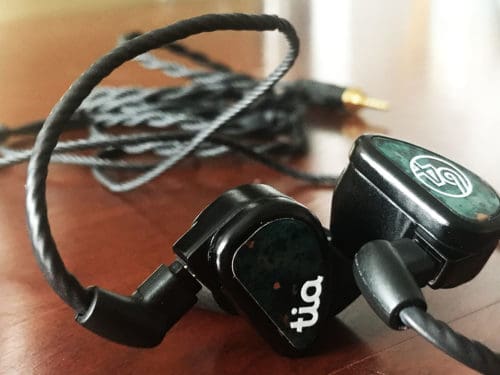
MAJORHIFI may receive commissions from retail offers.


